Introduction
Nuclear submarines are the leading strike force of a fleet, capable of controlling the expanses of the world’s oceans, covertly and quickly deployed in the required directions and cause unexpected powerful strikes from the depths of the ocean on sea and continental targets.
The main striking force of the Russian Navy are nuclear submarines armed with ballistic and cruise missiles with nuclear warheads. They are constantly in various parts of the world’s oceans, ready for immediate use of their strategic weapons. Submarines, armed with cruise missiles, are aimed mainly at combating the enemy’s large surface ships and strike on the enemy’s coastal infrastructure. Torpedo nuclear submarines are used to disrupt the enemy’s underwater and surface communications and in the defense system against the underwater threat, as well as to escort surface ships and missile submarines.
Nuclear submarines will be analysed in this material. Since the equipment of submarines with nuclear power and nuclear missiles, powerful hydro-acoustic systems and high-precision navigation weapons along with integrated automation of control processes and the creation of optimal conditions for the life of the crew they significantly expanded their tactical properties and forms of combat use.
Goals and Tasks
The following tasks, in order of importance, can be identified for the nuclear-powered submarines (NPS). It is the constant readiness for a nuclear strike, protection of its NPSs, and interception of enemy NPSs. To this end, they perform the following tasks.
- Supporting the combat service of the SMS (strategic missile submarines) in the patrolling areas and during transitions.
- Tracking the SSBN and submarines carrying sea-based cruise missiles of the potential enemy’s Navy in the areas of their combat duty and at the transitions, in readiness for their destruction, in order to disrupt or weaken the nuclear missile strike on the territory of the Russian Federation.
- Tracking the multi-purpose aircraft carrier group and ship strike group of the potential enemy’s Navy, in the patrolling areas, and on the transition to these areas, in readiness to strike the multi-purpose aircraft carrier group, in order to disrupt or weaken the air and/or missile attack on the territory of the Russian Federation.
- Anti-submarine protection of the Russian Navy’s ship strike group in the patrolling areas and the transition to these areas.
- Implementation of reconnaissance tasks through a system of bases, routes to patrol the forces of the Navy of the potential enemy, the collection of sonar information about submarines and surface ships of the potential enemy.
- Combat duty in adjacent areas in territorial waters of the potential enemy in readiness to strike the SLCM targets on its territory.
Currently these are the strategic nuclear submarines of the Russian Navy to perform the above tasks:
Nuclear submarines with ballistic missiles
Project 667BDR
These are second-generation NPSs. Most of the ships of this project are decommissioned. As at the end 2018: “Ryazan” (in service in the Pacific Fleet), “St. George the Conqueror” (in reserve).
General specifications
- Surface speed: 14 knots
- Underwater speed: 24 knots
- Operational depth: 320 metres
- Maximum operating depth: 400 metres
- Cruising capacity: 90 days
- Crew: 130 men
- Surface displacement: 10,600 tons
- Underwater displacement: 13,700 tons
- Total length (at the waterline): 155 metres
- Total beam: 11.7 metres
- Mid-ship draft (at the waterline): 8.7 metres
Armaments
- The submarine is equipped with four 533mm and two 400mm torpedo launchers. There are 16 launchers for the R-29R missiles.
Project 667BDRM
They are the basis of the marine component of Russia’s strategic nuclear triad, gradually transferring this role to the Project 955 “Borei” submarine.
As at the end of 2018: “Verkhotur’e” (in service in the Northern Fleet), “Yekaterinburg” (in service in the Northern Fleet), “Karelia” (in service in the Northern Fleet), “Bryansk” (undergoing scheduled maintenance, Northern Fleet), “Novomoskovsk” (in service in the Northern Fleet), “Tula” (in service in the Northern Fleet).
General specifications
- Surface speed: 14 knots
- Underwater speed: 24 knots
- Operational depth: 320 to 400 metres
- Maximum operating depth: 550 to 650 metres
- Cruising capacity: 90 days
- Crew: 135 to 140 men
- Surface displacement: 11,740 tons
- Underwater displacement: 18,200 tons
- Total length (at the waterline): 167.4 metres
- Total beam: 11.7 metres
- Mid-ship draft (at the waterline): 8.8 metres
Armaments
- The submarine is equipped with four 533mm torpedo launchers. There are 16 launchers for the R-29 RMU2 “Blue” ballistic missiles. On board, there are portable anti-aircraft launchers for the 9K310 “Needle-1” / 9K38 “Needle” systems.
Project 941
It is a series of Soviet and Russian submarines, the world’s largest nuclear submarines. A large coefficient of buoyancy and a strong cabin, allows the boat to break ice up to 2.5 metres thick. This allowed for the first time to carry out combat duties in the latitudes, including the North Pole.
As at the end of 2018: “Dmitry Donskoy” (in service in the Northern Fleet), “Arkhangelsk” and “Severstal” (prepared for dismantlement).
General specifications
- Surface speed: 12 knots
- Underwater speed: 27 knots
- Operational depth: 400 metres
- Cruising capacity: 180 days
- Crew: 160 men
- Surface displacement: 23,200 (28,500) tons
- Underwater displacement: 48,000 (49,800) tons
- Total length (at the waterline): 172 metres
- Total beam: 23.3 metres
- Mid-ship draft (at the waterline): 11 metres
Propulsion
- Nuclear, 2 water-cooled and water-moderated OK-650 reactors of 50 thousand HP (36.7 MW)
- 2 propeller-shafts
- 4 steam turbine nuclear power plants of 3.2 MW
- Backup: 2 DG-750 diesel generators (kW)
Armaments
- Six 533mm torpedo launchers
- 22 torpedoes 53-65K, SET-65, SAET-60M, USET-80 and anti-submarine missiles “Waterfall”
- 20 “Bulava” ballistic missiles
- 8 “Needle” anti-aircraft missile systems
Project 955
It is the most modern (4th generation) NPS with ballistic missiles in the Russian Federation’s Navy. The NPSs of this project are the first Russian submarines using a single-shaft hydraulic propeller with high propulsive performance. There are plans to distribute 14 nuclear-powered ships to the Northern and Pacific Fleet.
As at the end of 2018: “Yuri Dolgoruky” (in service in the Northern Fleet), “Aleksandr Nevsky” (in service in the Pacific Fleet), “Vladimir Monomakh” (in service in the Pacific Fleet). “Prince Vladimir”, “Prince Oleg”, “Generalissimo Suvorov”, “Aleksandr III”, “Prince Pozharsky”, laid down and in varying degrees of readiness.
General specifications
- Surface speed: 15 knots
- Underwater speed: 29 knots
- Operational depth: 400 metres
- Maximum operating depth: 480 metres
- Cruising capacity: 90 days
- Crew: 107 men
- Surface displacement: 14,720 tons
- Underwater displacement: 24,000 tons
- Total length (at the waterline): 170 metres
- Total beam: 13.5 metres
- Mid-ship draft (at the waterline): 10 metres
Propulsion
- Nuclear. One nuclear reactor, one steam turbine unit with the main geared-turbine unit, one propeller shaft, one hydraulic propulsion unit.
Armaments
- The submarines are armed with six 533mm torpedo launchers, torpedoes, torpedo-rockets, cruise missiles, 16 “Mace” intercontinental ballistic missiles, and portable anti-aircraft missiles systems.
Nuclear submarines with cruise missiles
Project 885
It represents the 4th generation of NPS with cruise missiles. This nuclear-powered submarine is able to use all the armed sea-based cruise missiles of the Russian Navy. In the future, the Yasen Project submarines should become Russia’s main multi-purpose nuclear submarines. Seven nuclear submarines are planned to be built.
As at the end of 2018: “Severodvinsk” (in service in the Northern Fleet). “Kazan”, “Novosibirsk”, “Krasnoyarsk”, “Arkhangelsk”, “Perm”, “Ulyanovsk”, laid down and in varying degrees of readiness.
Specifications
- Surface speed: 16 knots
- Underwater speed: 31 knots
- Maximum operating depth: 600 metres
- Cruising capacity: 100 days
- Crew: 90 men
- Surface displacement: 8,600 tons
- Underwater displacement: 13,800 tons
- Total length: 119 metres
- Total beam: 13.5 metres
- Height: 9.4 metres
Propulsion
- On the “Severodvinsk” a water-cooled and water-moderated reactor is installed on the OK-650V thermal-neutron reactor, one shaft, one water cannon or low-noise screw.
Armaments
- Ten 533mm torpedo units, P-100 “Onyx” anti-ship cruise missiles, Kh-35 anti-ship cruise missiles, Kh-101 strategic cruise missiles, ZM-54E and ZM-54E1 anti-ship cruise missiles, ZM-14E cruise missiles for destruction of ground targets.
Project 949A
Project 949A “Antey” submarines are the most numerous in this class of ships, which are armed with P-700 missiles, and ships of this class are the leaders in the number of “Granite” launchers on one carrier. Designed to destroy aircraft carrier strike groups. They are the Russian Navy’s main means of countering the US Navy strike aircraft carrier groups.
As at the end of 2018: “Voronezh” (in service in the Northern Fleet), “Orel” (in service in the Northern Fleet), “Smolensk” (in service in the Northern Fleet), “Tver” (in service in the Pacific Fleet), “Irkutsk” (being modernised, Pacific Fleet), “Omsk” (undergoing repairs, Pacific Fleet), “Tomsk” (in service in the Pacific Fleet), “Cheliabinsk” (being modernised, Pacific Fleet).
General specifications
- Surface speed: 15 knots
- Underwater speed: 33 knots
- Operational depth: 430 metres
- Maximum operating depth: 600
- Crew: 107 men
- Surface displacement: 14,700 tons
- Underwater displacement: 23,860 tons
- Total length (at the waterline): 154 metres
- Total beam: 18.2 metres
- Mid-ship draft (at the waterline): 9.2 metres
Propulsion
- Two OK- 650V nuclear reactors with a capacity of 190 MW.
Armaments
- Two 650mm and four 533mm torpedo launchers, “Granite” anti-ship cruise missile launchers.
Nuclear submarines with missile and torpedo weapons
Project 671 RTMK
No ship was lost, none had a serious accident. Among the submarine crews it is considered an extremely successful project for its characteristics, convenience and reliability.
As at the end of 2018: “Obninsk” (in service in the Northern Fleet), “Tambov” (being modernised, Northern Fleet). “Daniil Moskovsky” (in reserve). “Petrozavodsk” (will be dismantled in the near future).
General specifications
- Surface speed: 11.6 knots
- Underwater speed: 31 knots
- Operational depth: 400 metres
- Maximum operating depth: 600
- Cruising capacity: 80 days
- Crew: 96 men
- Surface displacement: 6,990 tons
- Underwater displacement: 7,250 tons
- Total length (at the waterline): 107.1 metres
- Total beam: 10.8 metres
- Mid-ship draft (at the waterline): 7.8 metres
Propulsion
- Two water-cooled and water-moderated reactors type VM-4, GTZA-615, total power of 31,000 HP. One shaft line, multi-blade screw, two auxiliary electric motors with a capacity of 375 HP.
Armaments
- Two 650mm torpedo launchers, four 533mm torpedo launchers.
Project 945
Submarines of this project marked the beginning of the third generation of multi-purpose nuclear submarines in the Soviet Union and became the basis for Project 971, boats which are the basis of the multi-purpose submarine forces of the Russian Navy. The use of titanium alloy of high specific strength allowed reducing the displacement of the boat, as well as significantly reducing the magnetic field. After modernisation, they will remain in service for another 10 years.
“Kostroma” (in service in the Northern Fleet), “Karp” (undergoing repairs and being modernised, Northern Fleet).
General specifications
- Surface speed: 19 knots
- Underwater speed: 35 knots
- Operational depth: 480 metres
- Maximum operating depth: 550
- Crew: 59 men
- Surface displacement: 6,300 tons
- Underwater displacement: 9,100 tons
- Total length (at the waterline): 107 metres
- Total beam: 12.2 metres
- Mid-ship draft (at the waterline): 8.8 metres
Propulsion
- OK-650A nuclear reactor of 180 MW, 4 steam generators, 2 turbo-generators, 2 battery groups, 2 DG-300 750 HP diesel generators with a fuel reserve for 10 days, 1 main screw, 2 370 kW low-speed engines and two low-speed screws.
Armaments
- Two 650mm torpedo launchers, 4 533mm torpedo launchers, 40 torpedoes and rocket-torpedoes, 8 9K310 “Needle-1” / 9K38 “Needle” portable anti-aircraft missile launcher systems.
Project 945A
As with Project 945 it has a titanium alloy body. The purpose of the class is tracking strategic submarines and aircraft carrier strike groups of the potential enemy and guarantee their destruction at the onset of the conflict.
“Pskov” (in service in the Northern Fleet), “Nizhni Novgorod” (in service in the Northern Fleet).
General specifications
- Surface speed: 19 knots
- Underwater speed: 35 knots
- Operational depth: 480 metres
- Maximum operating depth: 550
- Crew: 59 men
- Surface displacement: 6,300 tons
- Underwater displacement: 9,100 tons
- Total length (at the waterline): 107 metres
- Total beam: 12.2 metres
- Mid-ship draft (at the waterline): 8.8 metres
Propulsion
- One OK-650B water-cooled and water-moderated reactor (190 MW) and one geared-turbine unit (50,000 HP). Four steam generators, two turbo-generators of alternating current, 2 feed and 2 condensate pumps, 2 battery groups, 2 reversible converters, a multi-blade propeller screw and an ASDG-800 diesel generator.
Armaments
- Six 533mm torpedo launchers, “Granat” cruise missile launchers, 8 9K310 “Needle-1” / 9K38 “Needle” portable anti-aircraft missile launcher systems.
Project 971/971M
The submarines of this project became the main type of the multi-purpose nuclear submarines of the Russian Navy, replacing the out-dated boats of Project 671RTMK “Pike”.
“Panther” (in service in the Northern Fleet), “Tigre” (in service in the Northern Fleet), “Cheetah” (in service in the Northern Fleet), “Kuzbass” (in service in the Pacific Fleet).
“Boar” (undergoing renovations, Northern Fleet), “Wolf” (undergoing renovations, Northern Fleet), “Leopard” (undergoing renovations, Northern Fleet), “Samara” (undergoing renovations, Pacific Fleet), “Magadan” (undergoing renovations, Pacific Fleet), “Bratsk” (undergoing renovations, Pacific Fleet), “Cachalot” (undergoing renovations, Pacific Fleet).
“Barnaul” (subject to dismantlement, Pacific Fleet).
General specifications
- Surface speed: 11.6 knots
- Underwater speed: 30 knots
- Operational depth: 520 metres
- Maximum operating depth: 600 metres
- Cruising capacity: 100 days
- Crew: 73 men
- Surface displacement: 8,140 tons
- Underwater displacement: 12,770 tons
- Total length (at the waterline): 114.3 metres
- Total beam: 13.6 metres
- Mid-ship draft (at the waterline): 9.7 metres
Propulsion
- OK-650B3 (190 MW) nuclear reactor, 1 turbine with a capacity of 43,000 HP.
Armaments
- Four 650mm torpedo launchers, 4 533mm torpedo launchers.
Thus, the situation with the nuclear submarine component of the Russian Navy, which is in formation and ready to perform tasks, at the end of 2018, is as follows:
This table deliberately does not indicate NPSs undergoing repairs or modernisation. According to Russian media reports, submarine repair facilities are almost 100% full. Consequently, part of the NPSs in service, in the near future will leave for routine maintenance.
Based on the above, it can be concluded that as of the second half of 2018, the available nuclear submarine fleet of the Russian Navy is conditionally ready to carry out the assigned tasks. It is able to ensure the state sovereignty of the Russian Federation and territorial integrity and inviolability by keeping watch in constant readiness for a launch-under-attack or preventive massive nuclear missile strike on the territory of the country. However, for the task of protecting their submarines and intercepting the enemy it is not ready. Separately, it should be said that part of the NPS morally and physically is obsolete. Existing 2018 plans for the commissioning of new NPSs will not improve the situation cardinally. In this regard, in order to maintain the quantitative balance and achieve parity in the field of weapons for the Russian Navy, it is necessary to increase the number of cruise-missile-carrying nuclear submarines and torpedo submarines by 30%, without taking into account plans to re-equip the SSBNs.
Problems and solutions
The underwater component of the Russian Navy to a certain extent did not address the problems of the surface component. The reason for this is that the SSBN was, is and will be a critical component of the strategic nuclear triad of the Russian Federation. The state tried to save it even in the conditions of collapse of the army and military-industrial complex in the 1990-2000 years. Here you can add the fact that the submarine fleet to this day remains an extremely science-intensive sphere. Therefore, Russia simply could afford to lose scientific personnel and technology.
The progress of low-noise submarines of the Russian Navy. Especially with parameters such as speed and depth. This topic is periodically raised in the Russian media, as it is one of the most important for the NPS. With the same noise level, the speed of the submarine of the most modern Project 885 is much lower than the US Project “Virginia” and “Seawolf”. Another proof of the Navy’s lag in the field of hydro-acoustics is the unnamed Northern Fleet exercises, during which the Russian submariners superimposed the flight path of the US reconnaissance aircraft Orion on the movement of Russian submarines on the map. All the turning points of the Russian submarines’ route were very accurately noted. In fact, the plane was not even looking for them, but was heading to a specific point. At the same time, given the possibility of new means of search, the problem of secrecy has no absolute technical solutions. The most advantageous would seem to bring the individual works in the acoustic stealth of their submarines/enemy searches in the system. Such works are carried out in the Russian MIC.
The problem of rearmament on the promising “Mace” ballistic missile. As at the end of 2018, of the 32 tests conducted, only 25 were successful. This ratio can hardly be considered successful. Different reasons were given for this in the Russian media. This is the low quality of components and the technology development crisis. With it, the expediency of the project is questioned by a number of high-ranking Russian military. The small throw weight and range of the rocket is the most criticised. Given the number of tests conducted, it can be concluded that the Russian sailors are serious about adopting this missile into service. The solution to this problem, probably, can only be the improvement of the rocket during tests.
The problem of armaments of the Russian submarine fleet with anti-torpedoes. Studies on the possibility of effective destruction of attacking torpedoes with anti-torpedoes were started in the USSR in the second half of the 80s of last century. Before that, the problem of detection and accurate targeting was solved. However, the armament of the Russian Navy still does not have in their characteristics any operational development. This fact should cause concern to the naval leadership, as the military-technical idea of the western “partners” does not stand still and its fleet is armed with modern modifications of torpedoes (Mk.48, USA; DM2A4, Germany) and anti-torpedoes (SeaSpider, Germany, Tripwire, USA, MU90HK, France, Italy).
The absence of Russian Navy bases abroad. The presence of naval bases in Cuba, Yemen, Vietnam during the Soviet era made it possible to change crews in strategically important areas of the world’s oceans without returning the boats to the main bases, which allowed actually doubling the patrol period of one submarine. Currently, Russia does not have such bases and submarines, after a campaign, are forced to return to their permanent deployment stations. Recreating the spread of bases, their material support at least one in each strategic direction (the western part of the Atlantic Ocean, the Indian Ocean) could be a solution to this problem. The presence of a base in the port of Tartus (Syria) can only be considered a conditional decision.
The absence of a system of mobile-bases. Its presence could partially solve the problem of the lack of bases. In addition, such a system is capable of ensuring dispersed deployment, their repair and normal operation, protection from enemy attacks, combat training and rest for the personnel, bringing the forces to readiness and deployment for combat operations. The restoration of the system of mobile bases would be a solution to the problem. In this regard, it is advisable to have two mobile groups in each fleet:
Super-LASH (lighter-aboard ship) with a displacement of 70,000 tons of RO-RO type (main base/storage location/helipad), the integrated supply ship with a displacement of 36,000 tons;
- 2-3 high-speed container ships with a displacement of 25,000 tons, converted for storage/loading of ammunition;
- 2-3 high-speed tankers with a displacement of 25,000 tons,
- 1 hospital ship of 300-500 beds (hospital/rest home),
- 1 floating base of submarines with 20,000 tons displacement.
Insufficient number of staff. The downsizing of the Armed Forces of the Russian Federation at the end of the 2000’s touched the Navy as well. Currently, only SSBNs and SSGNs are manned with two crews. The NPSs in turn are manned with one. But the crew after arriving from the self-contained navigation should rest, prepare for a new campaign, retake tests for self-management, undergo training for a new type of weapons system and equipment. This is not counting vacations, missions and other life situations. The constant readiness to perform the tasks of one crew will mean its morale and physical fatigue or will mean that the nuclear submarines will stand idle. In addition, in the presence of two crews, the command creates a kind of reserve, when one of the two can be collected most prepared to perform important and responsible tasks.
Prospects for the development of the Russian nuclear submarine fleet
According to the commander-in-chief of the Russian Navy Admiral Vladimir Korolev, the efforts of the Navy’s main command will be focused on the further creation and development of a qualitatively new, balanced composition and combat capabilities of the Navy, capable, together with other forms and types of troops of the Armed Forces of the Russian Federation, to provide strategic nuclear and non-nuclear deterrence and protection of the Russian Federation’s national interests in the world’s oceans.
The basis of the group of naval strategic forces will be the strategic missile submarines of the new generation, which have high combat capabilities in both offensive and defensive capabilities. The prospective submarines from the general purposes forces of the Navy will be multi-purpose carriers capable of solving a wide range of problems in any area of the world’s oceans. To enhance combat capabilities, the nuclear-powered cruise missile carrying submarines and multi-purpose submarines will continue to be upgraded within the Navy.
The top-priority directions for the construction and development of the Navy in the nuclear submarine units will be the improvement and maintenance at a high level of naval strategic nuclear forces in the groups of strategic missile submarines, building up to the required level of combat potential of the Navy through the construction and modernisation of multi-purpose nuclear and non-nuclear submarines.
According to the Navy commander-in-chief, in the short term, work will be carried out to further improve the combat stability of submarines by further improving the characteristics of their stealth, increasing combat capabilities of countermeasures and self-defense. As part of the development of the underwater forces of the Russian Navy, the command is working to increase the capability to increase the potential of means covering conditions, improve the quality of automation of control processes, increase the offensive capabilities and further development of the emergency and rescue facilities complex.
Conclusion
If we evaluate the statement of the Russian Navy commander-in-chief regarding the prospects for the development of the nuclear submarine fleet, we can conclude that the military leadership has an understanding of the problem. And consequently, the ways to solve them. Despite the well-known problems in the industry, the Russian Federation still has the scientific and technological potential of modernisation and development of nuclear submarines, allowing to maintain the defense capability and to deter a potential enemy from rash actions. In the long term, the nuclear submarine with ballistic missiles on board will not give up its place and will remain the most important tool for ensuring the security of the state.



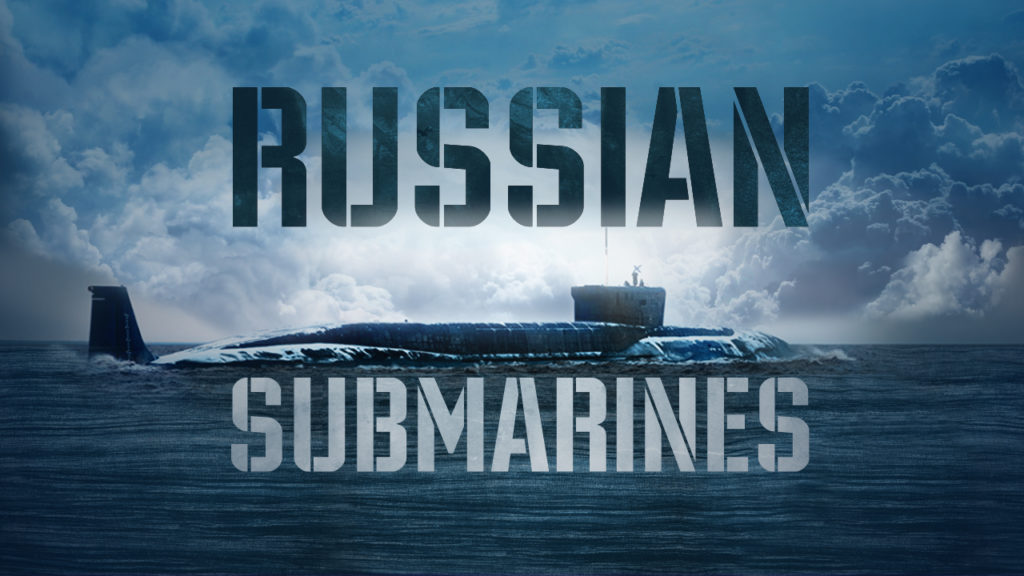
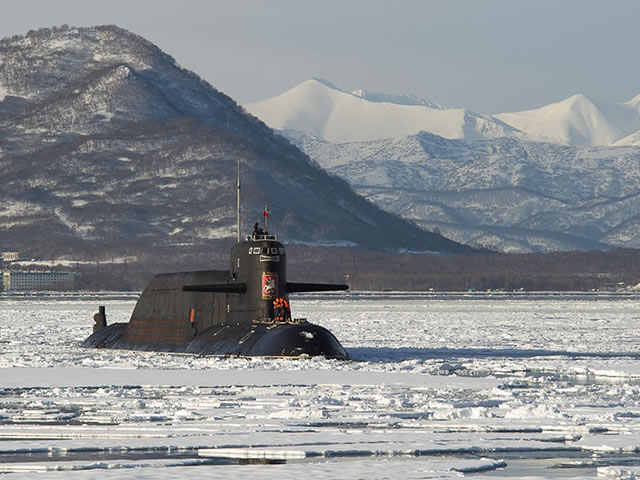
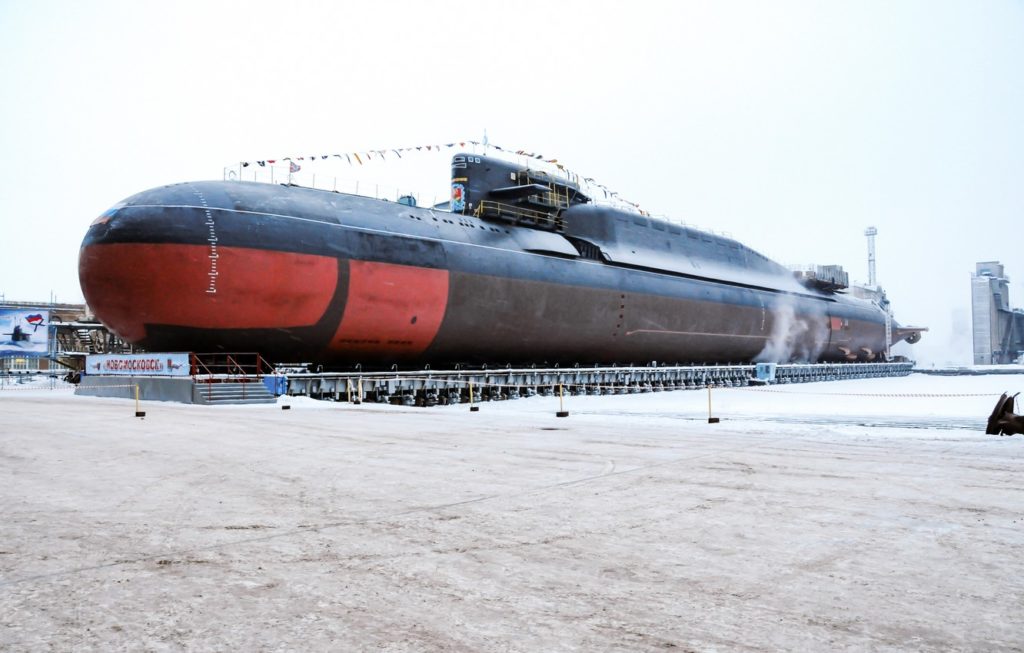
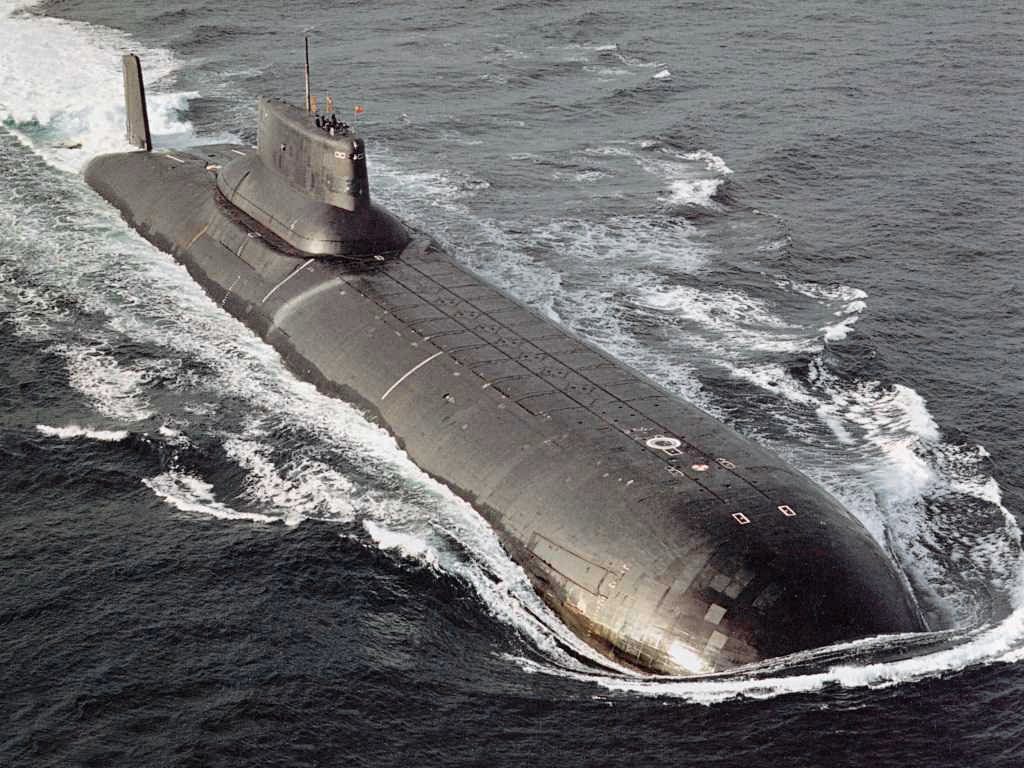
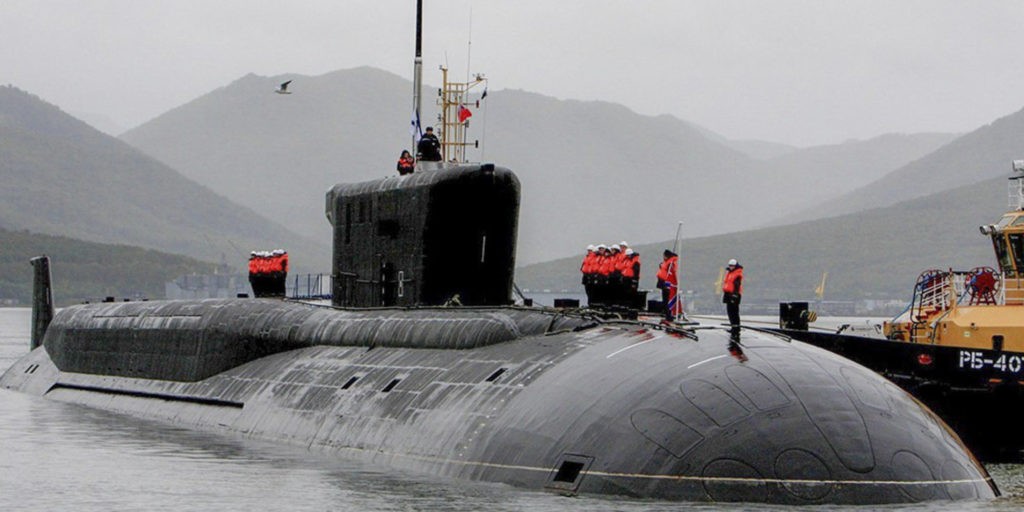
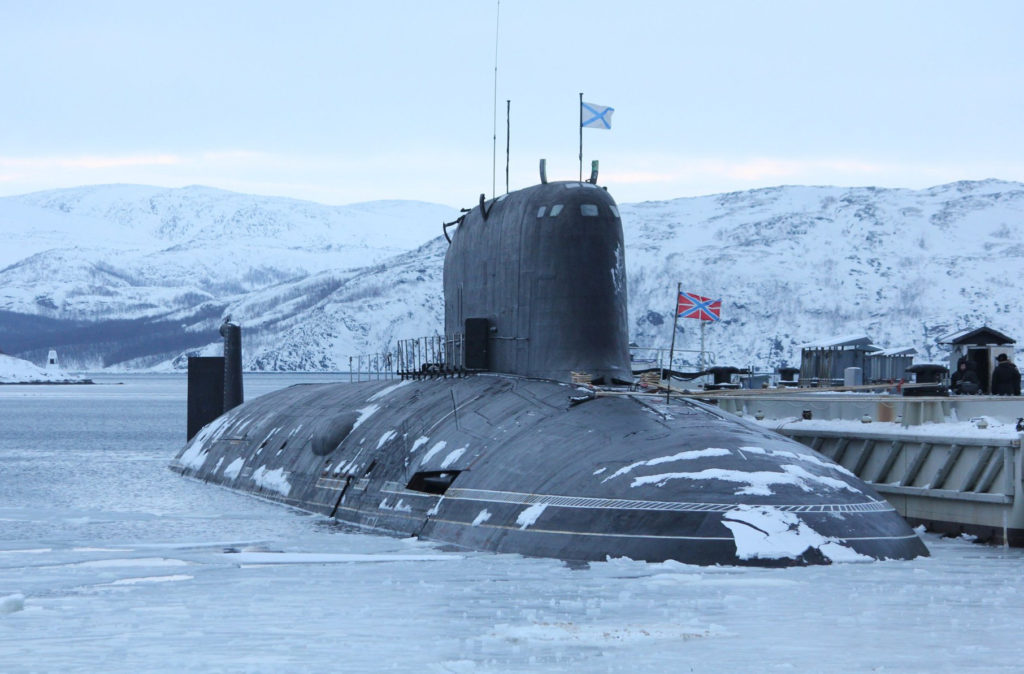
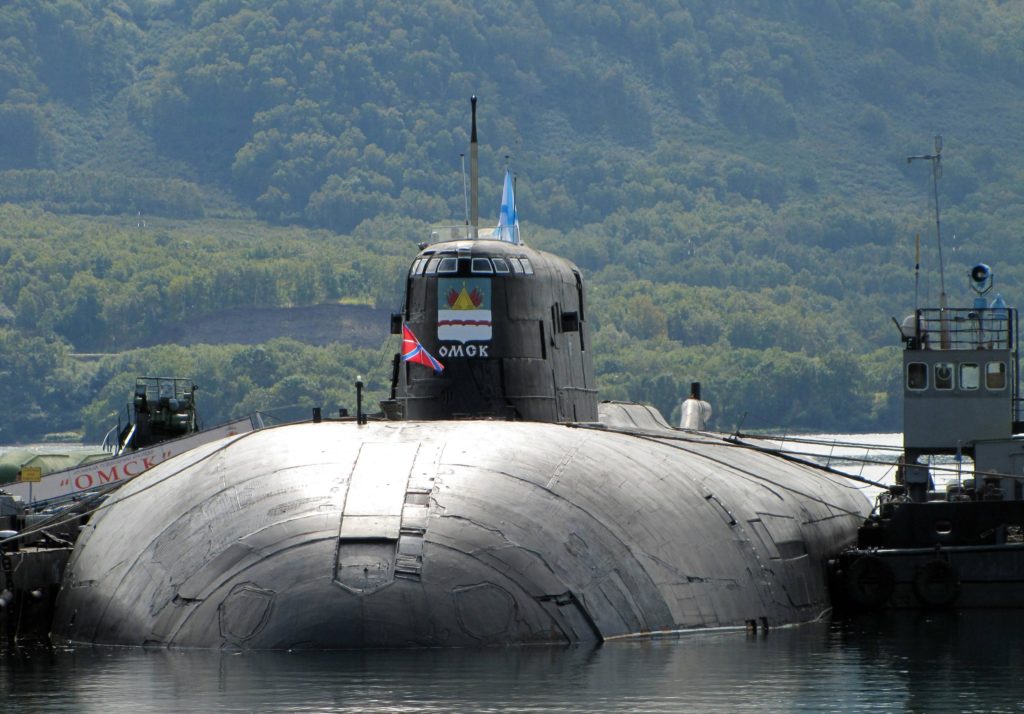
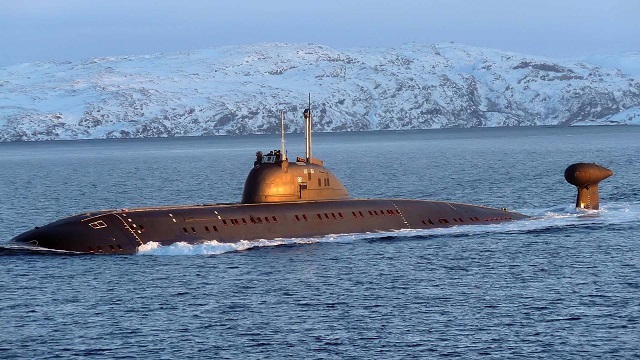
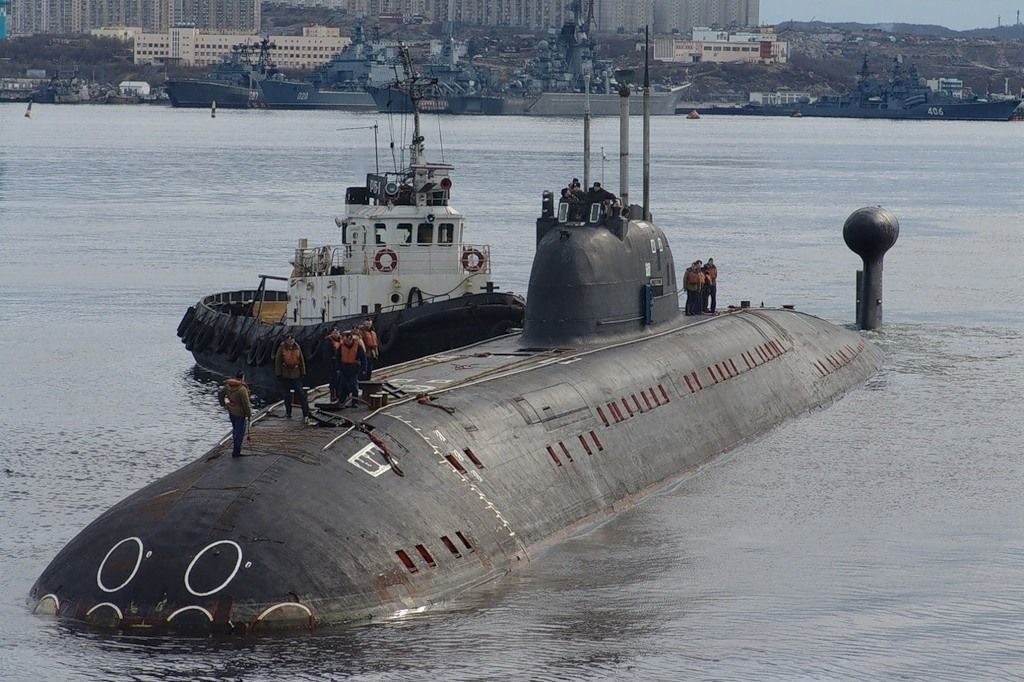

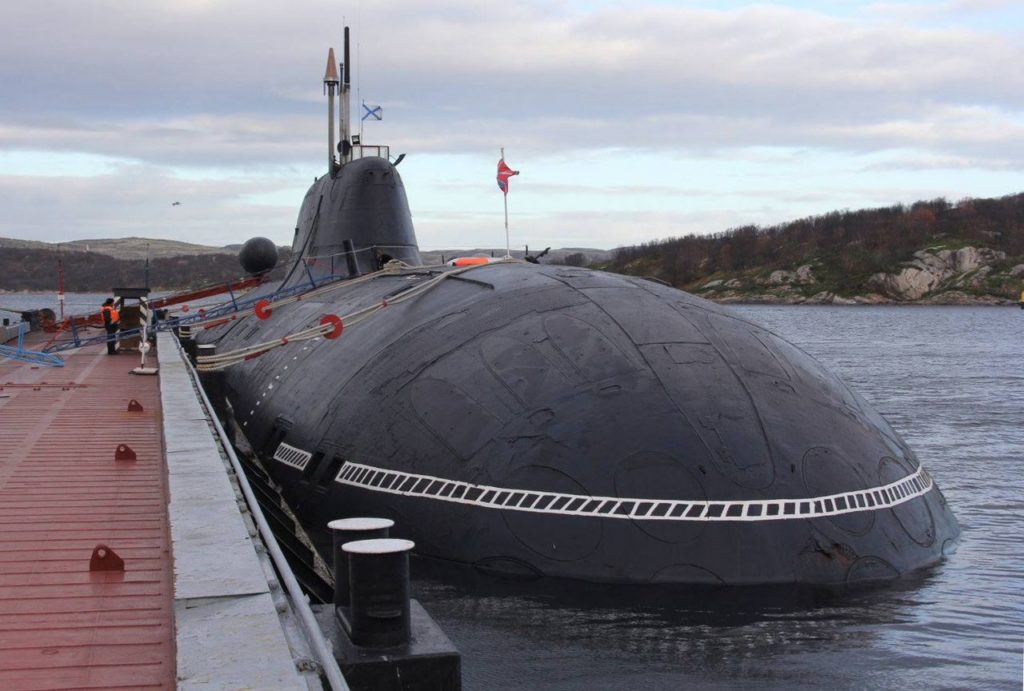
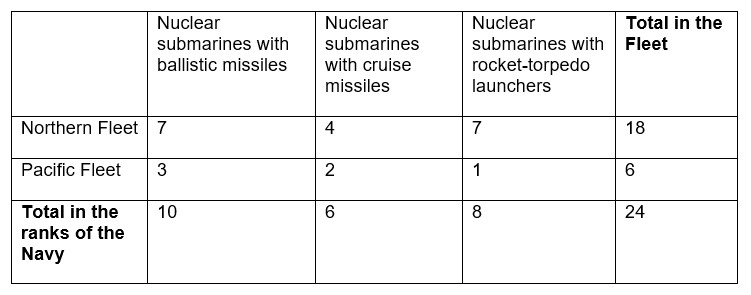



The Iranian and Russian vessels in international water is to stop smuggling of weapons from US, GB etc to the terrorists organizations like ISIS, Israel, Al-Qaeda etc..
You wish
:) Who’s the author of this article?
The writer explicitly states the Russian subs are slower for the same noise level. It has nothing to do with their maximum speed.
May I ask that you give me a link regarding respective noise levels? What I could find was that noise levels are very close.
Russia doesn’t have submarines, she has heavy underwater missiles carriers